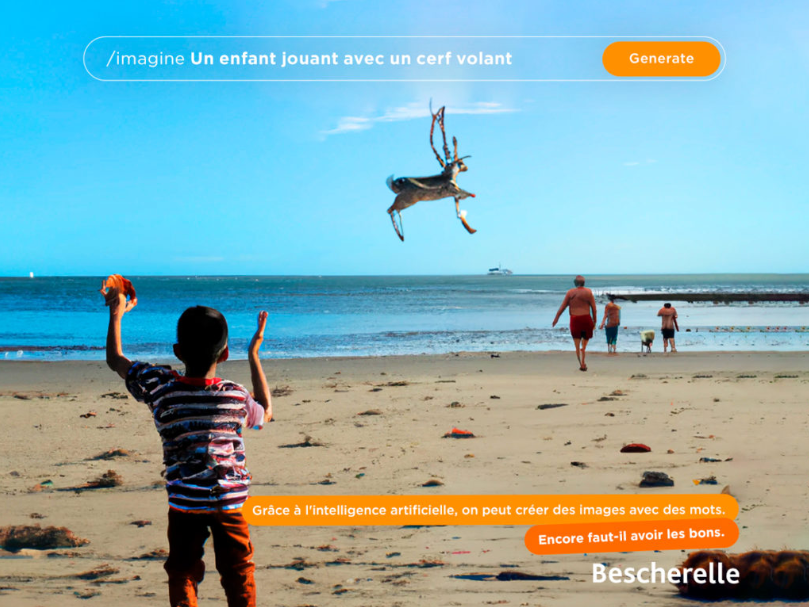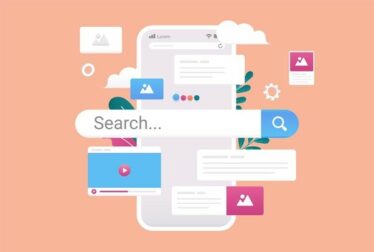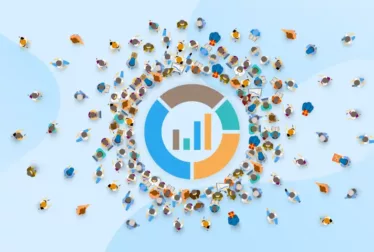1. Why do we ask this question in the first place?
Generative AIs of images and texts have revolutionized the art and communication professions in a spectacular way. The most popular of these is ChatGPT, Generative Text AI.
According to Google Trends, searches for the ChatGPT keyword have grown exponentially over the past three months and peaked on January 19.

This AI is so popular that, according to a survey by “Odoxa Innovation Meetings” for Mascaret and Strategies, 19% of French people say they have tried the tool.
According to the GoldenBees website, which specializes in business management and transformation, 40 to 70% of professions will be imbued with AI by 2025.
Thus, all content creation is disrupted and the value of content (visual, text, etc.) produced by a robot and artificial intelligence now depends directly on the value of the prompt (prompt = request sent to the AI ).
Our friends at Brainsonic translated it thus in their last Masterclass in partnership with La Réclame: “Prompt is the new skill”.
2. Areas and tools in which AI can be useful
The fields in which AI is able to create are almost endless. We are not just talking about text or images… We are also talking about artistic creation, marketing content, or even data generation. Regardless of its domain of evolution, its capabilities are always evolving and are limited by the data and algorithms available.
Here is a non-exhaustive list of what AI can create:
- Text
Text generation algorithms, such as GPT-3, can produce text that resembles that written by humans. These algorithms are used for automatic writing of articles, product descriptions and summaries.
- Pictures
AIs can also generate realistic images from textual descriptions, as in the case of StyleGAN algorithms. They are also used for image recognition or image super-resolution.
- Music
Music generation algorithms, such as Google’s Magenta, can create new compositions based on existing examples. They can also be used to transcribe music and identify musical genres.
- Video
Tools such as OpenAI’s Dall-E can create images from textual descriptions, and these images can be animated to create videos.
- Video games
AI can create procedural game levels (produced on a large scale and in an automated way) or non-playable characters with realistic behaviors, only with the help of algorithms.
But it can also claim to create Motion Design, NFT, code, 3D, etc.
At this point, everything seems perfect! And if this continues, we will all end up going out of business and being replaced by AIs, since they can do everything.
3. Not everything is so obvious…
Today, AIs do not think, and are not in pure creation. They swallow knowledge, data and restore a summary that responds to the prompt. Thus, they are only data synthesizers that have a capacity beyond our understanding, and this reveals several issues.
- Attention through illusion
Generative text AIs are not semantics, just syntax and they just add the most likely word after a series of other words. The whole may seem coherent, but it is only an illusion of meaning. Unlike search engines, generative text AIs are not intended to identify relevant sources based on a query. The system simply evaluates which word goes better after which other word and renders it only in correct form, but it is not about meaning or substance.
- Copyright and property rights
The other major domain dominated by generative AIs is that of images. Thanks to these, with a simple prompt, it is possible to obtain very well-made works, where the illusion is flagrant. As mentioned above, these are AIs that rely on a database to reproduce a reality. This raises the question of the copyright of the purpose of the work. The authors of the original content probably do not want it to be sucked up and reappropriated by AIs.
- A purely technical limit
One of the other limitations is purely technical. The prompt language will become a language in its own right. The gap will therefore increase between the communication agencies that master and those that do not master the AI language.
4. Overall, what do we get out of it?
Here is the response of an AI to the request to define a generative AI:

This is what the AI brought to us and it illustrates well the comments made above.
It is a very large sentence, with many words that complement the others. So in terms of form, it’s great, we have very well constructed sentences, but basically, it gives us rather vague information on what concretely and easily is a generative AI.
- Human Intelligence still has an important place to play
AIs will not replace the neural connections that make an idea become an idea. An AI can only produce original angles under the pressure of a very well configured, very complete prompt and therefore with a lot of Human Intelligence.
- Change the timescale of a project
It’s AIs that model ideas, but it’s not AIs that have the ideas. Where it will change some things is on the time scales that are imposed on creative ideas. Modeling a creative idea will take less time.
For example, where before we could spend 50% of the time finding an idea and 50% of the time modeling it, with AI we can spend 80% of the time looking for the idea, and developing others. , because the time to model it will only be 20%.
As a more concrete example, we can cite the Bescherelle campaign, produced by the Brainsonic agency, which emphasizes the importance of words. The campaign was completed in just 2 days from the creative idea to its realization.

5. AI solutions that can be used in advertising agencies, concretely
- To generate images
Combine MidJourney and Stable Diffusion to create complete, realistic storyboards and save time on content creation. It is also a great way to test your creativity and explore creative hypotheses.
The use is quite simple and intuitive. All you have to do is enter keywords and iterate by shading the prompt if you don’t like the result.
- For texts
Jasper is a very advanced AI text generator built primarily on GPT-3 by OpenAI. Although it requires a large amount of training data to produce high-quality results, its results are often very difficult to distinguish from those of a human writer. Moreover, Jasper is extremely flexible and can be used to create different types of content such as articles, product descriptions, website content… Jasper has native integration with Surfer SEO, which allows you to Incorporate all suggested keywords and assets to help blogs rank in search results.
In general, the tools must be tested and interested in them to ensure their effectiveness and relevance, but above all they allow you to gain in productivity and time.



